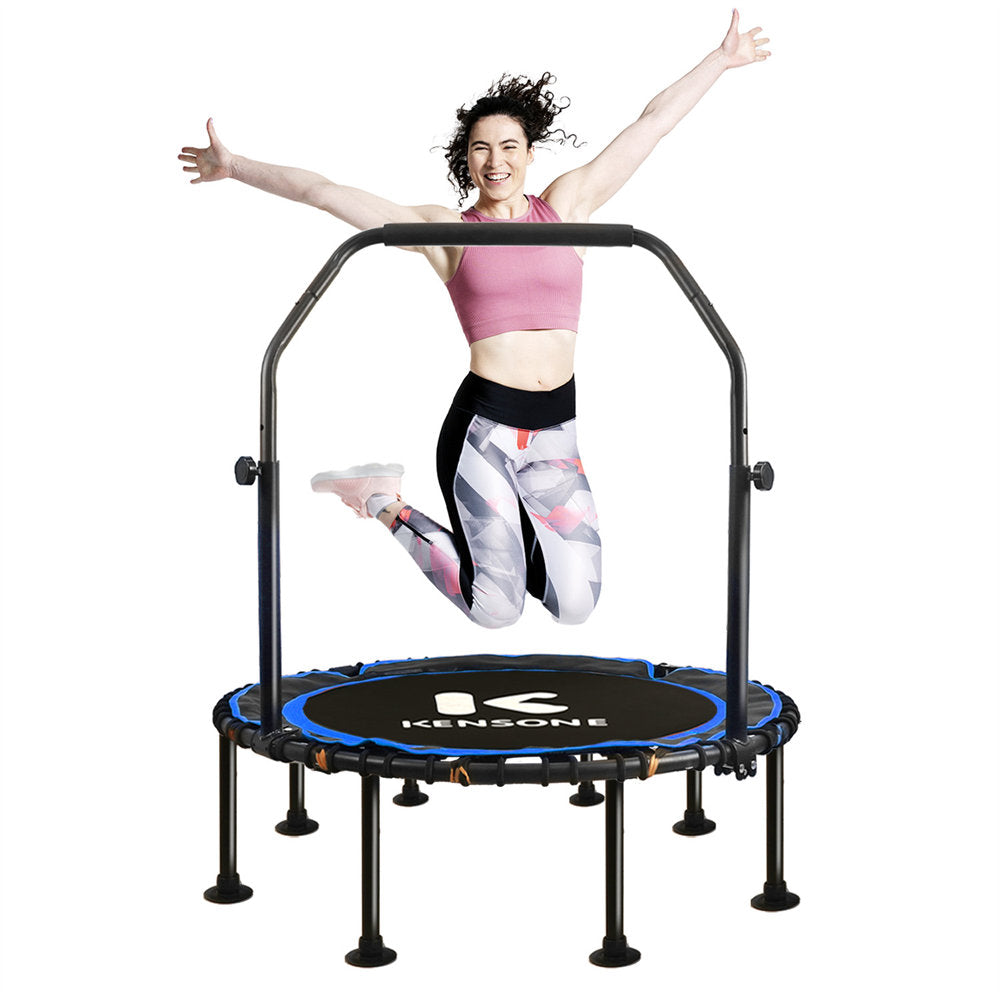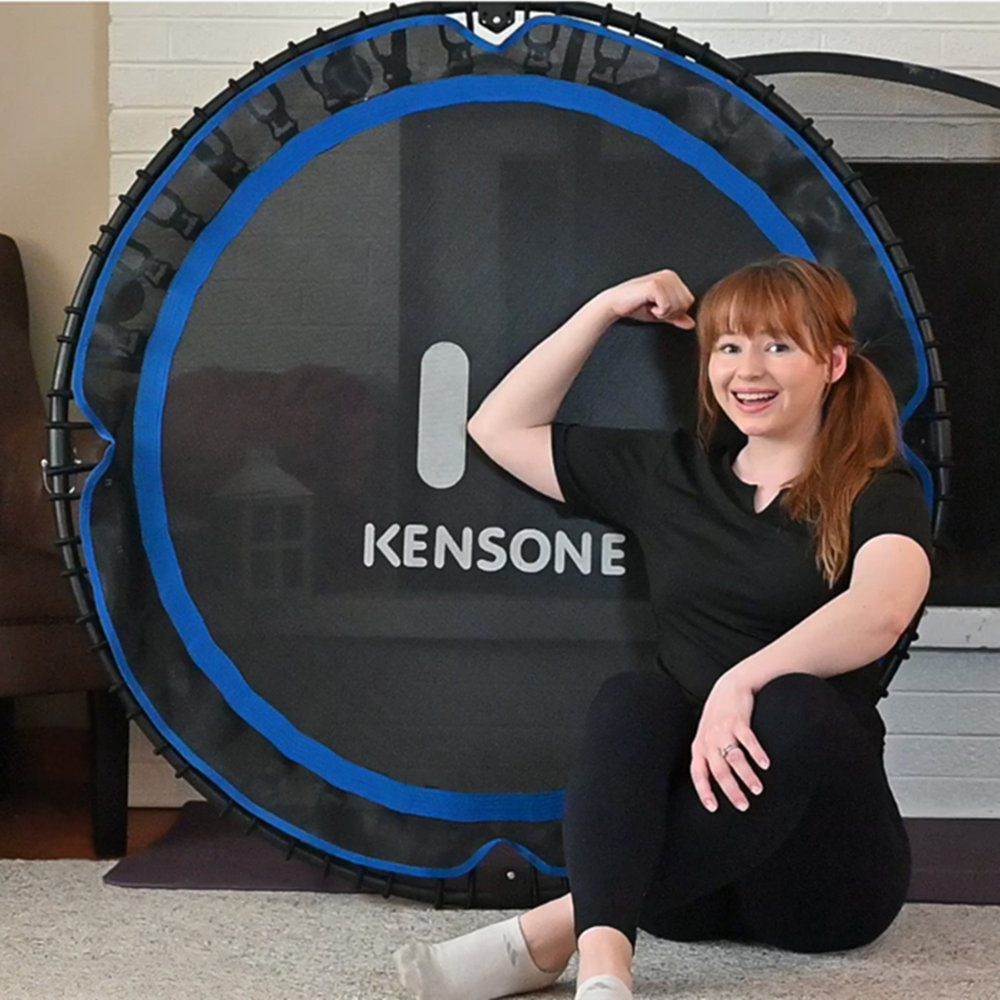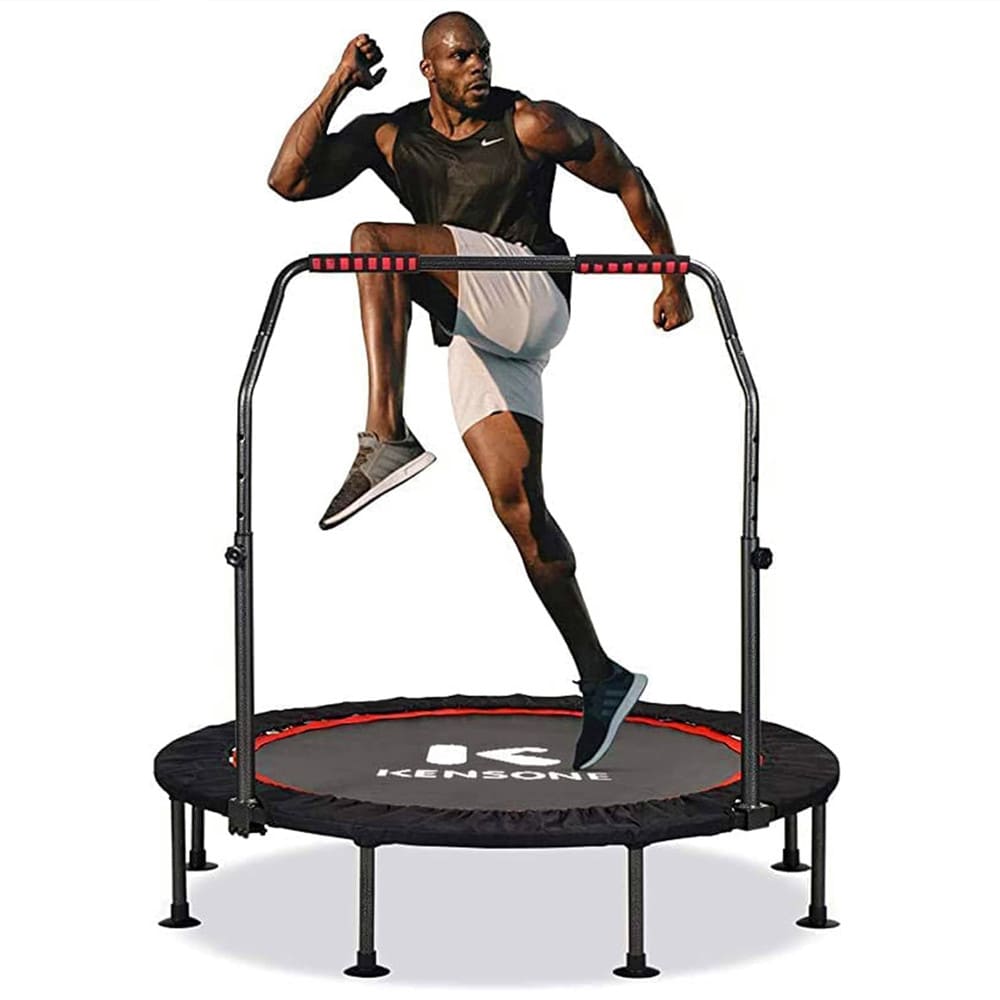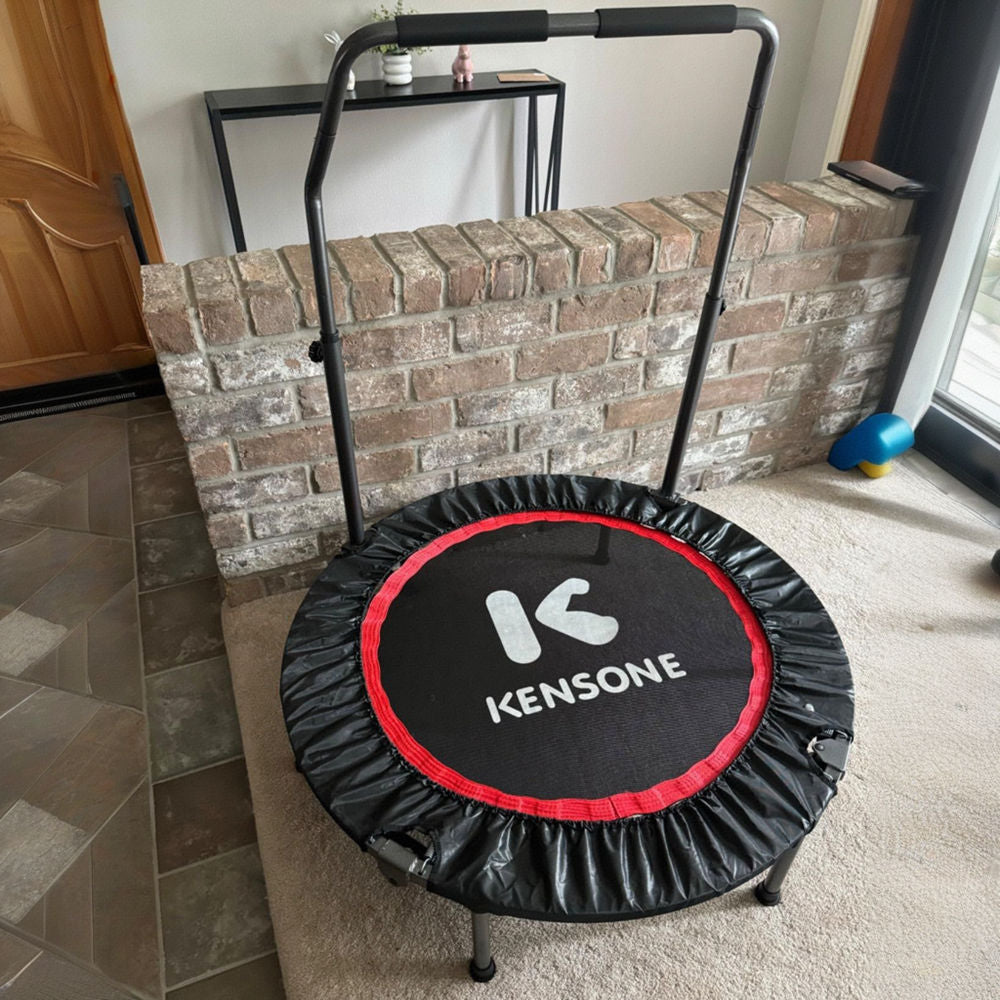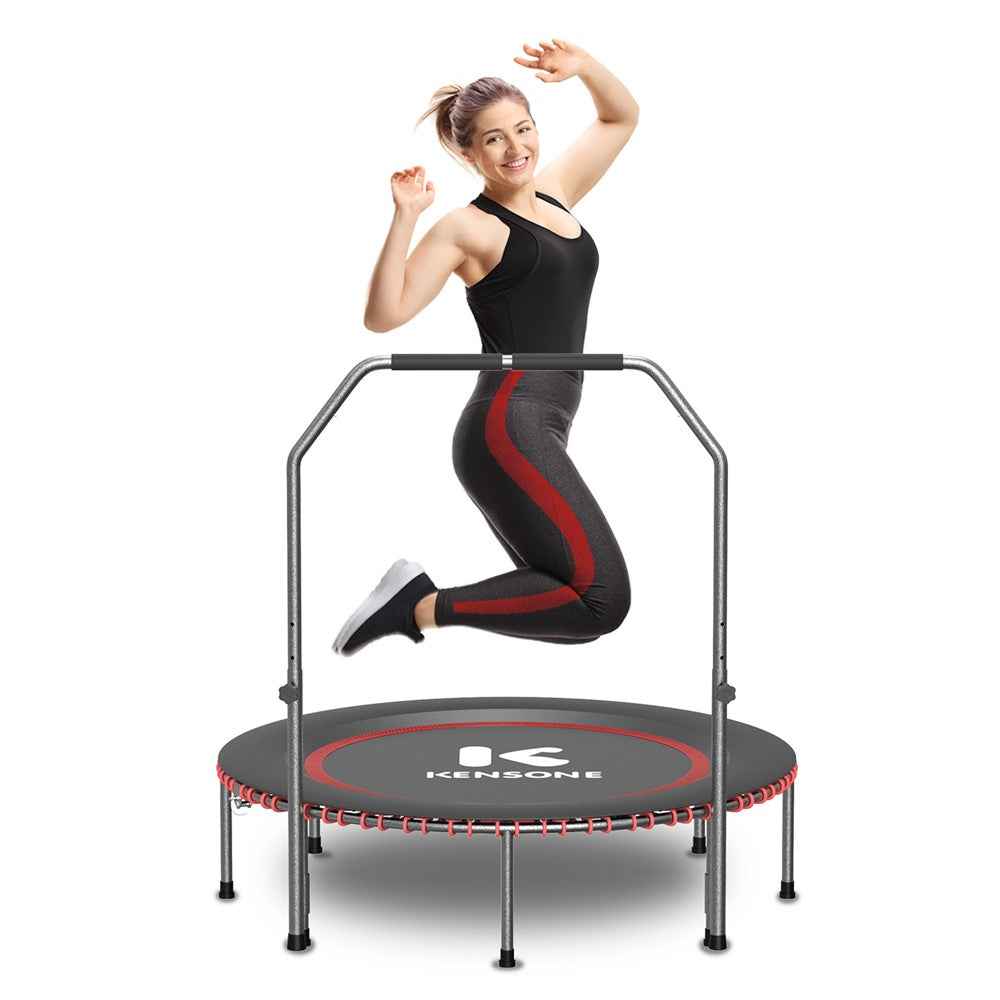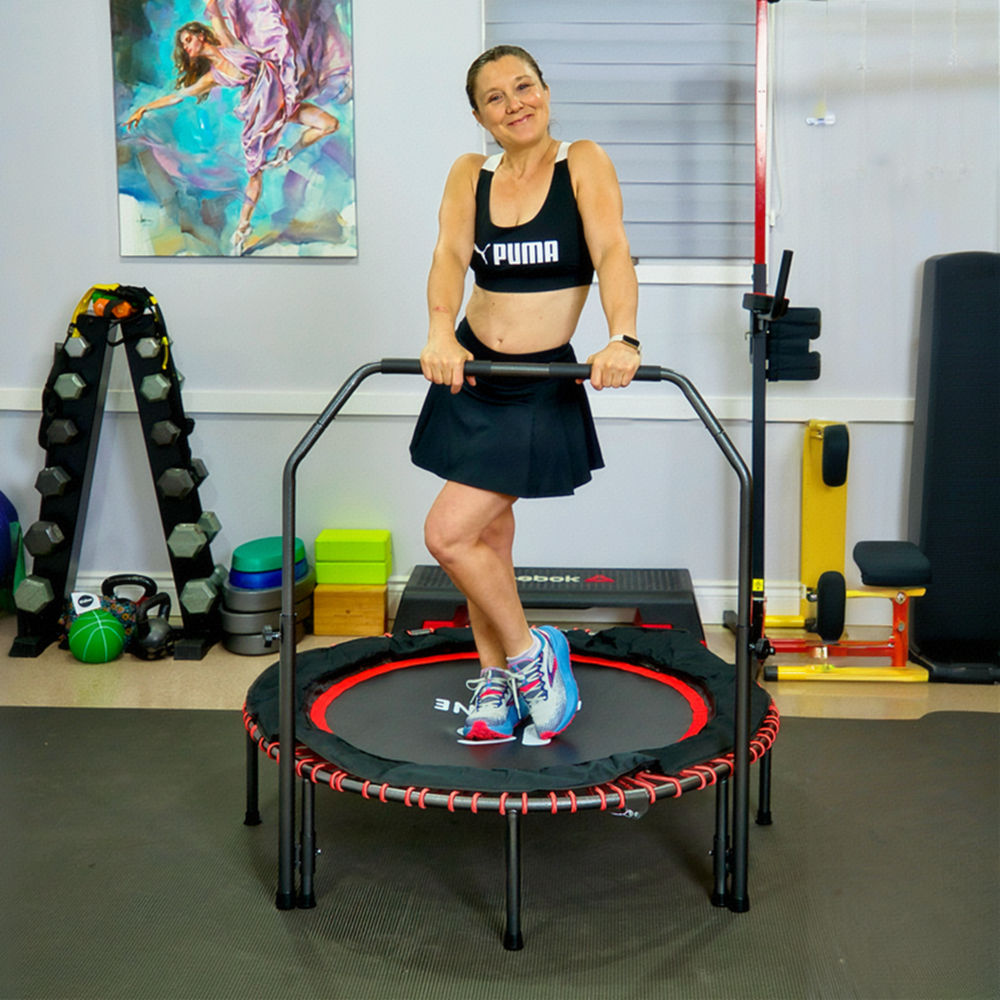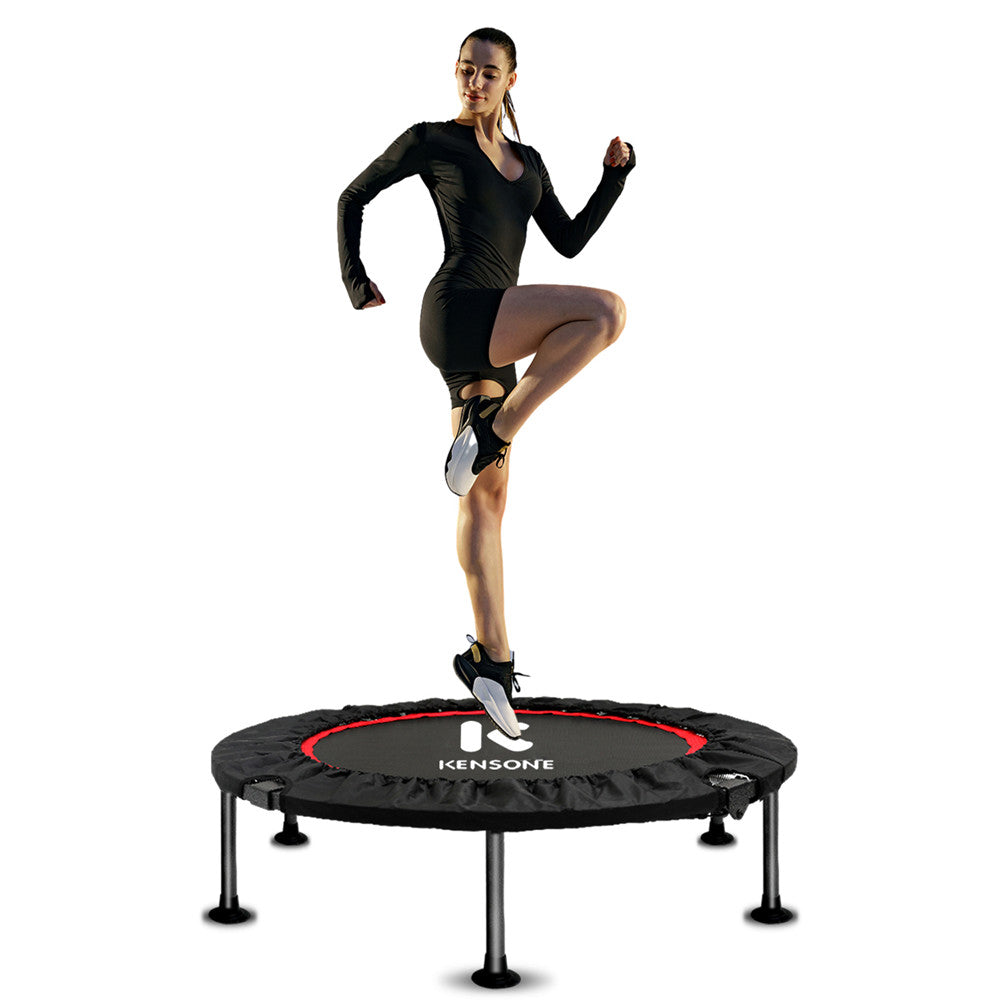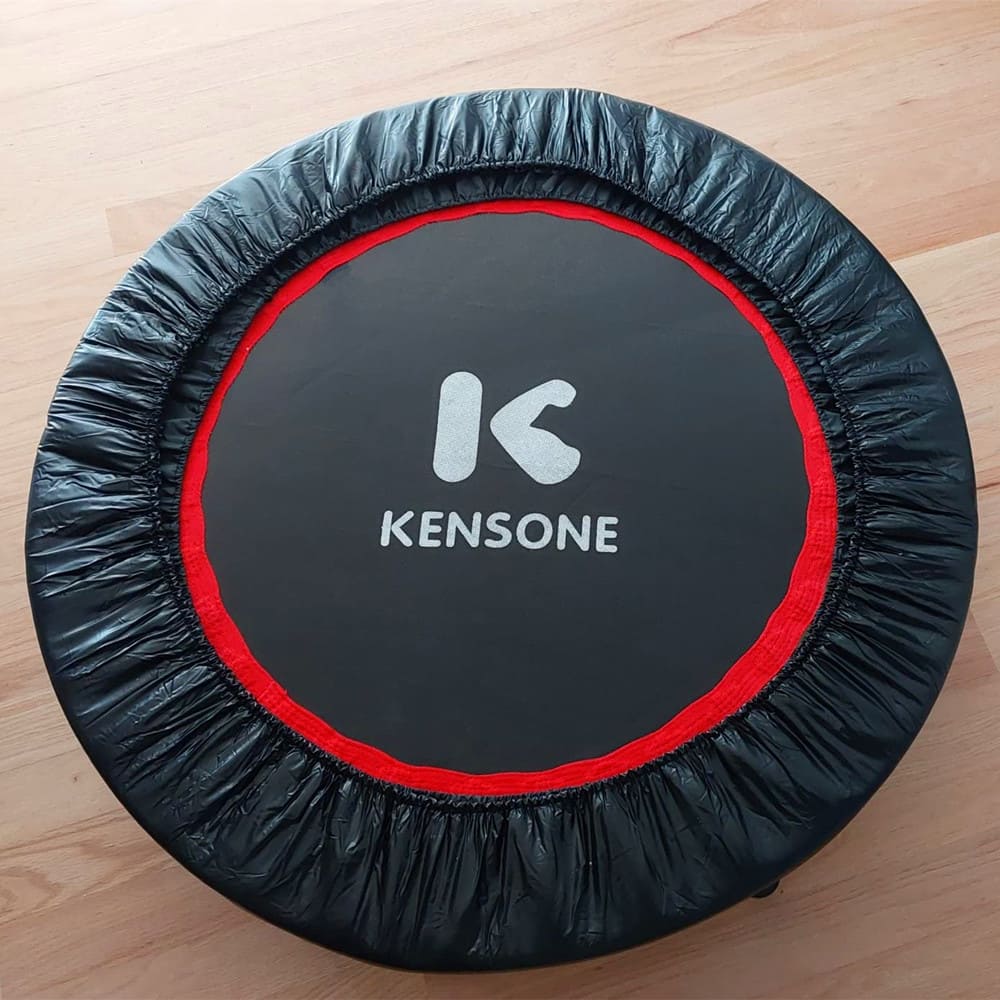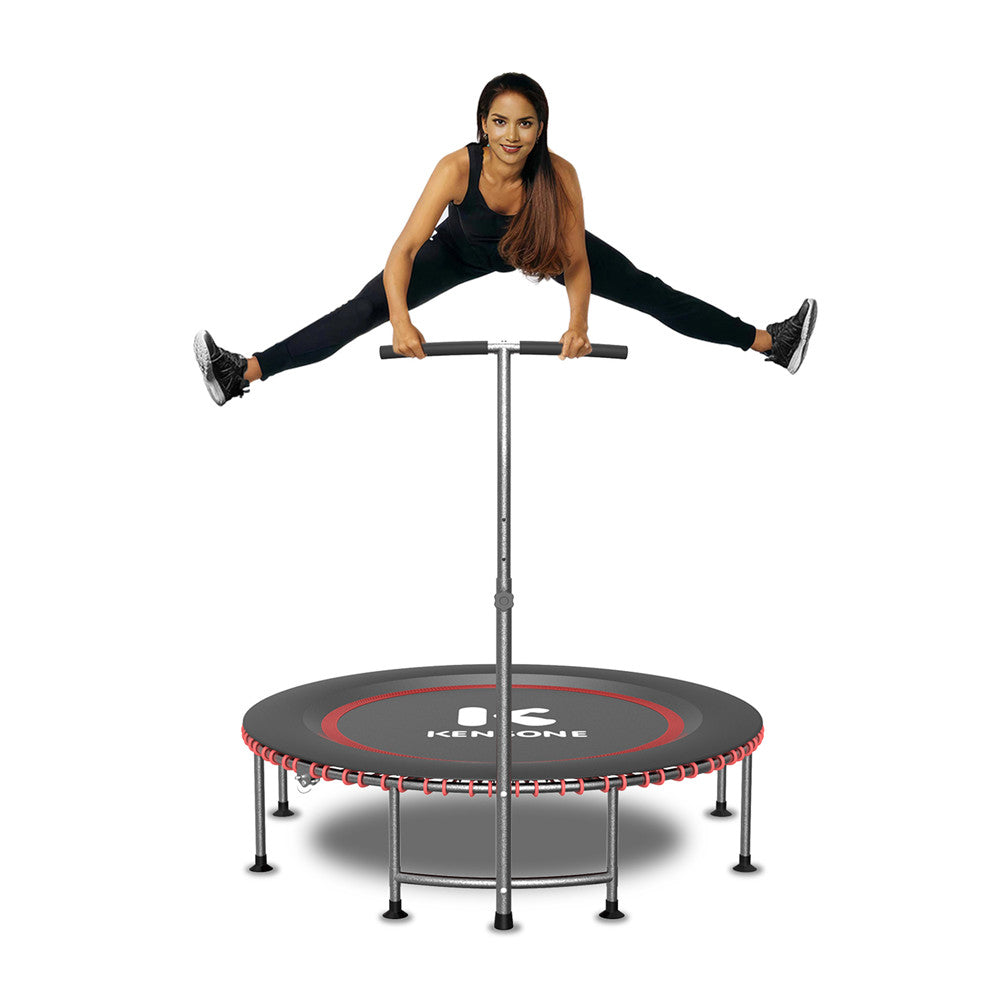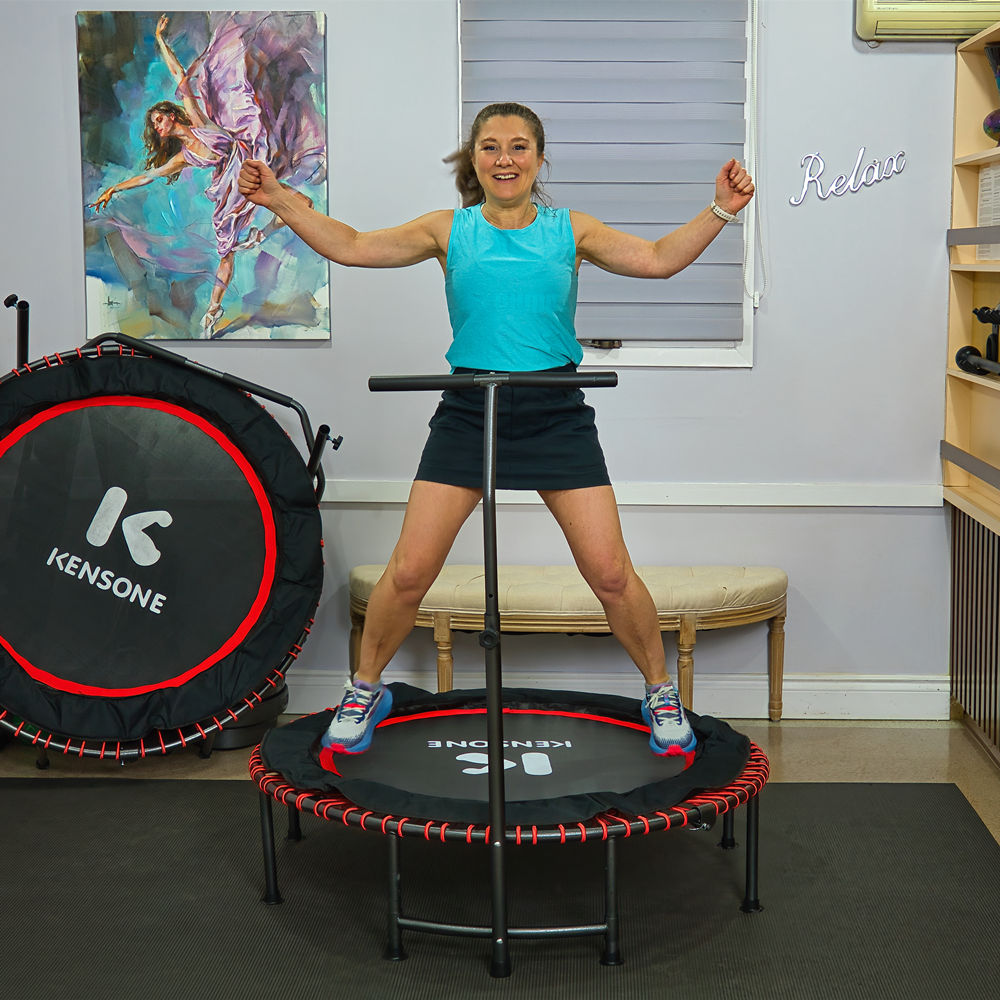Bungee or Spring Rebounder – What is the Difference?
The many health benefits of rebounding, a fun and effective workout done on a mini-trampoline, are making it more and more popular. Rebounding can assist you in achieving your objectives, whether they want to reduce weight, strengthen your heart, or simply enjoy a mild exercise that is easy on your joints.
But one frequently asked issue when selecting a rebounder is: Should I go with a spring rebounder or a bungee rebounder? To assist you in making an informed decision, this article will compare and contrast the features.
Understanding the Basics: What is Rebounding?
We need to grasp the basics of rebounding exercises before delving into the specifics of bungee and spring rebounders. Rebounding is a low-impact workout that works your entire body and is easy on your joints. It is performed on a small trampoline known as a rebounder. This activity promotes your body's lymphatic system, which is vital to the functioning of your immune system, helps you gain lean muscle tone, and keeps your heart healthy.
By bouncing on the rebounder, you can enjoy an effective and easy workout, making it a great way to stay fit.
What is a Spring Trampoline?
A spring trampoline is a mini-trampoline where the mat is attached to the frame with metal springs. These rebounders are commonly found and usually cost less than those using bungee cords. Let's explore the main features of a spring rebounder:
-
Construction and Durability: Spring rebounders are built with solid materials, using steel springs to connect the jumping mat to the frame. This gives them a firm and lively bounce, which is great for intense workouts requiring quick movements. The steel springs help provide a fast and energetic rebound, making these rebounders ideal for exercises that require speed and agility.
-
Bounce Quality: Spring rebounders provide a firmer bounce, meaning you get a quicker rebound with each jump. This can be a significant advantage for fast-paced exercises that need quick movements. However, the firm bounce, while great for intense workouts, can strain the joints more than a bungee rebounder's softer, gentler bounce. There may be better choices than spring rebounders for people who want a low-impact exercise.
-
Noise Levels: Spring rebounders are usually noisier because of their metal-on-metal construction. While the extra noise might not bother you if you're exercising alone or in a space just for workouts, it could be a problem in shared or quiet environments, making them less ideal for some people.
-
Maintenance: Spring rebounders need regular care because the springs can wear out or lose their bounce, which must be replaced to keep the rebounder working well. Even with these maintenance needs, spring rebounders are still a favorite choice for people looking for a solid and effective exercise tool.
What is a Bungee Rebounder?
Bungee rebounders are a newer type of mini-trampoline. Instead of steel springs, the mat is attached to the frame with elastic bungee cords. This design offers a unique workout experience with several key benefits:
-
Construction and Durability: Bungee rebounders use strong elastic cords instead of metal springs. These cords provide a smoother, quieter bounce and help reduce the wear and tear on the mat. Since there are no metal parts, you won't have to worry about squeaky noises during your workout.
-
Bounce Quality: The bounce on a bungee rebounder is softer and slower than a spring rebounder. This makes it perfect for gentle exercises, relaxation, and workouts focusing on balance and coordination. It's also kinder to your joints, which is especially helpful for people with joint problems or those recovering from injuries.
-
Noise Levels: One of the most significant benefits of a bungee rebounder is its quiet operation. The elastic cords remove the metal-on-metal noise, allowing you to enjoy a peaceful workout. This is especially useful if you live with others or prefer to exercise without loud distractions.
-
Maintenance: Bungee rebounders are usually easier to take care of. If a bungee cord breaks, you can replace it individually without changing the entire set. This helps the rebounder last longer and makes it more affordable in the long run.
Example Product: KB U-Bar Bungee Trampoline

The U-Bar 48" Bungee Trampoline is an excellent example of a bungee rebounder that provides a quiet, smooth, and gentle bounce. It's perfect for people who prefer a softer landing, which is easier on the joints and ideal for longer workout sessions.
Critical Differences Between Bungee and Spring Rebounders
When comparing bungee and spring rebounders, several vital factors might affect your choice:
|
Bungee Rebounders |
Spring Trampolines |
|
Smooth, Quiet Bounce: Bungee rebounders use elastic cords instead of metal springs, offering a smoother, quieter bounce. This is ideal for indoor use, especially in shared living spaces where noise could be a concern. |
Firmer Bounce: Spring Trampolines provide a firmer, more responsive bounce, which some users prefer, especially for more intense workouts.
|
|
Low Impact: The elasticity of bungee cords provides a gentler bounce, which reduces stress on the joints. This makes it an excellent choice for people with joint issues or those recovering from injuries. |
Higher Impact: The firmer bounce provided by springs can be harder on the joints, particularly for people with existing joint problems or for those using the rebounder for longer periods. |
|
Durability: High-quality bungee cords are less prone to wear and tear compared to metal springs, which can stretch or break over time. |
Widely Available: Spring Trampolines have been on the market for longer and are more widely available, often with a variety of models to choose from. |
|
Customizable Tension: Some bungee rebounders allow users to adjust the tension of the cords, providing a more personalized workout experience depending on the user’s weight and fitness level. |
Noise: Metal springs can be noisy when in use, which might be a drawback for some users.
|
|
Cost: Bungee rebounders tend to be more expensive than spring-based models due to the materials and technology involved. |
Affordability: Generally, spring trampolines are more affordable, making them accessible for a wider range of budgets. |
|
Assembly: Setting up a bungee rebounder can be more challenging because of the tension required to attach the cords. |
Maintenance: Springs may need replacement over time as they can stretch or rust, especially if the rebounder is used frequently. |
Choosing the Right Rebounder for Your Needs
Now that you know the critical differences between bungee and spring rebounders, how do you choose the right one? Here are a few things to think about to help you decide:
-
Workout Goals: What do you want to get out of your rebounding workouts? A spring rebounder might be better if you aim for high-intensity cardio and fast-paced routines. But if you're looking for a low-impact, joint-friendly option for gentle exercises, a bungee rebounder could be just what you need.
-
Space and Portability: Consider where you plan to use your rebounder and whether you'll need to move it around a lot. A 36" or 40" might be more practical if you have limited space or want to take your rebounder on trips. A larger bungee rebounder can provide a better bouncing experience if you have a dedicated workout area.
-
Budget: While price shouldn't be the only thing you think about, nitpicking a rebounder you can afford is essential. Spring rebounders usually cost less, but bungee rebounders can save you money in the long run because they need less upkeep.
-
Noise: If you don't like noise or plan to use your rebounder in a place where others might be bothered, a bungee rebounder is quieter and might be better for you. Spring rebounders can be noisier, which might be problematic in some spaces.
-
Personal Choice: Ultimately, picking a bungee or spring rebounder is up to you. Some people like a spring rebounder's firm and quick bounce, while others prefer a bungee model's soft and steady bounce. Try both types to see which feels better for your body and workout style.
To sum things up, bungee and spring rebounders have unique benefits for home fitness enthusiasts. The choice between them depends on what you like, your workout intensity preferences, and how much you want to spend. A spring rebounder might be a good fit if you're looking for a high-energy, fast cardio workout. But a bungee rebounder might be better if you care more about being gentle on your joints, doing low-impact exercises, and having a quiet workout experience.
If you're still not sure, the U-Bar 48" Bungee Trampoline is a great option. Like other bungee rebounders, it gives you a great bounce and is strong, easy to take care of, and quiet. It's perfect for anyone who wants to improve their rebounding workouts.
Remember, no matter which rebounder you choose, buying a good-quality product is essential to ensure your workouts are safe, effective, and fun. Consider your options and needs, and pick the rebounder that best matches your fitness goals.
Here are some additional FAQs that may help you:
Which is better, a bungee or spring rebounder?
Best for:
● Bungee: Seniors, injury recovery, quiet home use.
● Spring: Intense workouts, budget buyers.
What is bungee rebounder?
A bungee rebounder replaces metal springs with elastic cords (usually rubber or synthetic bungees) to create tension.
Key Features:
● Zero noise: Ideal for indoor workouts without disturbing others.
● Adjustable tension: Some models let you tighten/loosen bungees.
● Joint protection: Reduces impact by up to 80% vs. springs
What is the best material for a rebounder?
Frame:
● Steel: Most durable (holds 250–400 lbs). Look for powder-coated rust resistance.
● Aluminum: Lightweight but less sturdy (best for travel).
Mat:
● Polypropylene: Pliable yet strong (common in premium models).
● PVC: Cheaper but stretches over time.
Bungees/Springs:
● Latex bungees: High elasticity (Bellicon uses medical-grade latex).
● Steel springs: Galvanized steel resists corrosion.
-by Author Olumide





